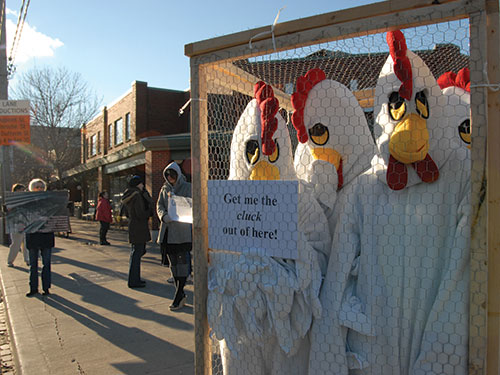To be inclusive and fair, journalists and editors should:
- Balance industry and government sources with activist sources where any issue affecting or involving animals is discussed. For example, a mass killing of cows due to an outbreak of foot-and-mouth disease should not only be reported from the side of agribusiness and government regulators (solely as an economic loss or public health issue), but also from the perspectives of farmed animal advocacy groups (as a rights and welfare issue for animals and workers).
Complex issues, such as mass extinction of species and use of animals as resources do not always fit well into event-focused news (episodic coverage). And dramatic protest events and direct action by certain activist groups tend to get more news coverage than less dramatic activist campaigns and thus become the “face” of the animal protection movement to the public (often creating a radical stereotype that is unrepresentative of the social movement as a whole). To address this imbalance and favor more thematic coverage, journalists and editors should:
- Include the context and history of animal advocacy events and accomplishments across the entire spectrum from more radical to moderate tactics and ideologies. This will provide a more representative picture of the diversity of the movement and its motivations for the public to consider. The goal is to cover substance rather than spectacle.
Broadcast and digital news often rely on dramatic images. For animals, dramatic footage often comes in the form of undercover footage. Yet, behind-the-scenes footage of animal exploitation is difficult and risky to obtain, especially, in some states, as recent “ag gag” laws increase the criminal punishment for anyone documenting and exposing farmed animal conditions. Yet owners of domesticated or captive animals must be held accountable, allowing the public visual access to determine whether the treatment of these vulnerable beings is fair and in accordance with societal values, expectations, and laws. In selecting visuals, journalists and editors should:
- Be willing to air verified undercover footage of exploitation of animals for public debate as well as obtain such footage themselves when other open means of investigation do not yield access to verifying and exposing routine treatment and living conditions of animals.
- Balance footage of animals as victims by also showcasing animals in empowering ways as fellow, productive citizens of their own communities (not just dependent beings, totally reliant upon human care or mercy).
- Seek visual evidence of wild animals in their natural habitats living as free, independent adults in social settings rather than relying on images of captive animals in zoos or aquaria.

